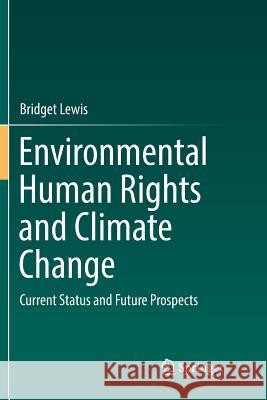Environmental Human Rights and Climate Change: Current Status and Future Prospects » książka
topmenu
Environmental Human Rights and Climate Change: Current Status and Future Prospects
ISBN-13: 9789811347092 / Angielski / Miękka / 2019 / 250 str.
Kategorie:
Kategorie BISAC:
Wydawca:
Springer
Język:
Angielski
ISBN-13:
9789811347092
Rok wydania:
2019
Dostępne języki:
Ilość stron:
250
Waga:
0.37 kg
Wymiary:
23.39 x 15.6 x 1.4
Oprawa:
Miękka
Dodatkowe informacje:
Wydanie ilustrowane











